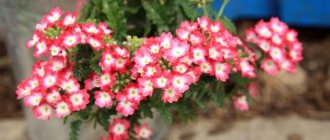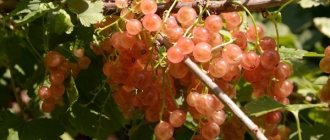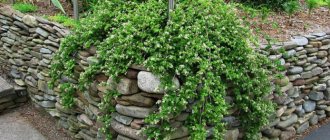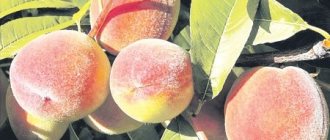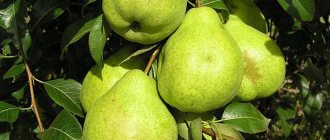General characteristics and description of the plant
Japanese spirea, or Japanese meadowsweet (lat. Spiraea japonica) is a perennial deciduous shrub or shrub belonging to the Rosaceae family. The shoots are erect, with thick felt pubescence; in young shoots the pubescence is soft and appressed. The leaves are simple, petiolate, pubescent. It is highly valued for its flowers - panicles or corymbs collected in inflorescences .
The peculiarity of this plant is that it is very hardy and can easily adapt to various natural conditions.
Depending on the variety, the flowers can be white, red, pink, etc. Also, depending on the variety, flowers can be located both at the top of the stems and along almost the entire length of the shoot.
Japanese varietal spirea is usually divided into summer-flowering and spring-flowering.
Varieties of Japanese spirea
Japanese spirea has about 100 species and hybrids. The most popular are:
Little Princess
Spiraea japonica Little Princess
Forms a small shrub about half a meter high. Prized for its vibrant foliage and panicles of soft pink flowers. Blooms in mid-summer . Well suited both for single planting and for decorating hedges, alpine slides, and flower beds.
Golden Princess
Japanese Spiraea Golden Princess
is a shrub and reaches a height of up to 80-100 cm and has a spread of almost a meter. It got its name for the golden color of the foliage, which appears closer to flowering. The flowers are large, dark pink, well shaded by leaves.
Shirobana
Spiraea japonica Shirobana
is a summer flowering plant. Tall shrub reaching up to a meter. It differs from others in its narrow elongated dark green leaves. The colors of the flowers range from white to almost red . It needs pruning, since the crown is formed very chaotically during the growth process. The variety is notable for the fact that it often produces inflorescences shaped like a heart.
Albiflora
Spiraea japonica Albiflora
Distinguished by white flowers. A low shrub or shrub that blooms in late summer . It has a strongly growing crown and needs regular pruning and removal of faded flower stalks.
Goldflame
Japanese Spiraea Goldflame
Loved for its rapid growth and powerful flowering. One of the most powerful varieties of Japanese spirea. Reaches a height of up to 1 meter . Over the course of the season, the foliage changes color from orange in the spring and bright yellow in the summer to copper in the fall. The flowers are bright pink, clearly visible against the contrasting foliage. The variety takes root very well in urban environments.
Agrotechnical features of growing Japanese spirea
Soil fertility, intensity of watering, method of shelter in winter - all this is not so important for spirea.
It is necessary to water the plant only during the first year after transplantation. There are no special recommendations for pruning, but the crown of the plant, under skillful hands, is perfectly formed. The shrub can grow from 30 cm to one and a half meters, it all depends on which variety was purchased. The shape of the crown can be described as spherical, in some cases dense and dense, in others sparse and disheveled. The foliage is excellent, even close to the ground the trunks are not visible. Photos of Japanese spirea can often be found not only on the Internet, but also on the pages of monthly catalogs with planting material, where many different varieties are offered to gardeners. Flowering begins in July and continues until August. Only those shoots that appeared on the plant this year flourish. Seed ripening period is October. Daughter plants take root easily. For successful rooting, you need to dig a hole the size of which will correspond to the roots. If the soil is fertile, then planting will not require additional fertilizing with fertilizers. This shrub is often used as a hedge; for example, the Japanese spirea variety “Goldflame” is suitable for this purpose.
Landing
The most optimal time for planting spirea is autumn after leaf fall. Less commonly, spirea is planted in early spring, immediately after the snow melts before the first buds bloom. The plant is not demanding on soil, but is light-loving . Some varieties are more shade-loving, and the planting location is based on the characteristics of the variety itself.
Too long, unhealthy, damaged roots of the seedling are cut off. The branches are shortened by an average of a third, diseased and damaged branches are cut off at the root.
It is necessary to plant spirea in cloudy weather, ideally in rain.
If the roots are dry, immediately before planting, soak them in a bucket of water.
The planting pit should be twice the size of the root system and have strictly vertical walls. The bottom of the pit is laid with peat or turf, sheet soil. After planting, the soil is lightly pressed down and watered well. If the soil is clayey, add a drainage layer in the form of broken bricks to the bottom of the hole.
The pit for planting is prepared in 2-4 days.
Watering
Due to its shallow root system, spirea does not tolerate drought well, so during the dry season it needs moderate watering: twice a month for each bush, 15 liters of water. The plant also needs plenty of watering after pruning.
Japanese spirea and azalea in a garden with an Asian flavor
Due to the beautiful color of the leaves, miniature varieties of spirea are also popular for creating bonsai.
Care and cultivation
Spiraea is loved for its unpretentiousness, resistance to frost and disease, and its proximity to other ornamental plants. However, almost all varieties have certain maintenance requirements. Due to the characteristics of the root system, spirea does not tolerate drought well and requires regular weeding and loosening to improve oxygen access to the roots. Some varieties require regular crown formation to ensure a neat appearance of the bush.
Watering
The weak root system of spirea requires regular watering, especially during dry seasons. Spring varieties are more tolerant of lack of moisture , while summer varieties, especially during flowering, absorb large amounts of water.
Spiraea should be watered sparingly
Excess moisture, as well as lack of it, is harmful to the plant. If there is an excess of moisture in the soil, the roots will begin to rot, which will inevitably lead to the death of the plant.
During drought, each bush is watered with 1.5 buckets of water once every two weeks. The plant needs good watering in the spring after planting and after pruning to restore vitality.
Top dressing
On fertile soil, spirea does not need additional feeding. It is allowed to feed the plant with peat or compost once a season in the fall or spring after the snow melts. Spiraea must be fed with mineral fertilizers immediately after planting .
In order for spirea to delight you with lush and long flowering, it is useful to pamper it with liquid fertilizers twice during the summer.
During growth on nutrient-poor soils, fertilizing is carried out in the spring before flowering, after flowering and after pruning, as well as in the fall. In mid-summer, the plant can be fed with a solution of mullein with the addition of superphosphate.
Trimming
Pruning is an important point in spirea care. Bushes tend to grow and become overgrown. Pruning is carried out to form the crown, to rejuvenate the shoots, and to improve the health of the bush as a whole.
The more you prune the plant, the more powerful and luxuriant the bush will grow.
Preventative pruning is carried out before buds begin to open . Frozen tops are trimmed, dried and diseased trunks are trimmed. Bush rejuvenation is carried out when the plant begins to age and produce fewer flowers. The entire bush is completely cut off at the root in the fall. In the spring, young shoots will emerge from the roots.
It is permissible to rejuvenate the bush by cutting out only old and thick shoots, leaving thin young shoots.
Spring varieties are pruned immediately after flowering, summer varieties - in the spring of next year. During flowering, drying flower stalks are cut off so as not to waste the vitality of the plant.
Care
Japanese spirea is an undemanding plant that can adapt to any conditions. But it is better to familiarize yourself with some of the features of its cultivation in advance in order to “help” realize your full potential.
Watering and fertilizing
In the first year after planting, Japanese spirea seedlings need regular watering. Several times a month, about 15 liters of water are poured under the bush. Adult plants need additional watering only in dry, hot weather. Afterwards the soil is loosened and the tree trunk circle is mulched.
Young bushes are fed with organic fertilizers several times a season to stimulate active growth of green mass. From the second year, during the flowering period, additional complex mineral fertilizers with a high content of phosphorus and potassium begin to be applied. An adult bush is fed with organic matter twice, in spring and autumn; and once, at the beginning of summer, with a mineral mixture.
How and when to prune Japanese spirea
The main pruning of spirea is carried out in the spring. From the third year of life, when the sap begins to flow, the stems are shortened, leaving no more than 20 cm, in order to stimulate branching. The bush usually forms itself; sometimes, in order to “lighten” it, part of the side shoots growing inward is removed. In summer, faded panicles are cut off and, if necessary, sanitary pruning is carried out. Japanese spirea tolerates trimming well.
Preparing for winter
Most varieties of Japanese spirea tolerate frost well, so in the fall it is enough to:
- Partially prune the branches, removing weak side shoots.
- Mulch the roots with straw or fallen leaves.
If winters are cold and have little snow, additional branches or spruce branches are laid on top of the mulch layer. Young plants are more sensitive to cold, so they are given additional shelter even in regions with a temperate climate.
Reproduction
The plant can be propagated by dividing and replanting the old bush, as well as using seeds, cuttings and layering.
Seeds
Seedlings of Japanese spirea Seeds
can only be propagated by non-hybrid species, since the seeds do not retain the varietal qualities of the parent plant. Seeds are sown in spring in boxes with fertile soil, previously well moistened. The seedlings are planted in open ground after 3 months .
Cuttings
Reproduction of Japanese spirea by cuttings
Cuttings can be carried out starting from the third decade of June. The shoot is cut into several equal parts, which are planted in a mixture of peat and river sand. Cuttings require high soil and air humidity - watering is done up to four times a day, spraying up to eight. In winter, the cuttings are covered, and in the spring they are planted in a new place.
Dividing the bush
Reproduction of Japanese spirea by dividing the bush.
Dividing the bush is carried out only in young plants no older than three years. Old plants will not tolerate transplantation well and will not produce good shoots. Division is carried out in the fall after leaf fall or in the spring before the first buds bloom . The bush is dug up and divided into several daughter plants. One daughter bush must have at least five mother trunks. Next, the daughter bushes are transplanted to a new location.
By layering
Scheme of propagation of Japanese spirea by layering
One of the most effective methods of propagation is propagation by layering - such seedlings have a fairly high survival rate. The vegetative branch is not cut from the main bush, but is pressed to the ground with staples and covered with soil or a peat-soil mixture. The branches take root well, and the daughter seedlings can be transplanted to a new location without much difficulty.
Planting and care in open ground
Since Japanese spirea begins to bloom in the summer, it is advisable to plant it in early spring. And you definitely need to catch it before the leaves bloom.
Planting material is usually purchased from nurseries. This way you can be sure of its quality. The root system can be open or placed in a container. The main thing is that the roots are not overdried, and that the shoots have a healthy appearance and strong buds.
Spiraea is unpretentious in the choice of soil and care, but grows better on fertile soils, and also loves well-lit places.
Important! When calculating the distance between spirea bushes, you need to take into account the fact that it produces abundant basal shoots.
Planting young bushes in open ground is carried out in the following sequence:
- About 4 days in advance, dig a hole slightly larger than the rhizome.
- Lay a layer of brick or crushed stone about 20 cm thick to prevent stagnation of water.
- Place the seedling in the hole.
- Mix turf soil, humus, peat and sand and cover the seedling with it, without covering the root collar.
- Pour 1-2 buckets of water and mulch with peat.
- Make several depressions near the trunk to better retain moisture.
Pests and diseases
In general, spirea is resistant to various pests and diseases. The most unpleasant and dangerous thing for spirea is considered to be the spider mite , whose eggs are quite resistant to most chemicals. Treatment against spider mites is carried out several times to completely destroy all possible eggs and individuals.
The plant is affected by spider mites
In summer, ants can drag aphids onto bushes, especially if the anthill is located close to the bushes. Aphids eat the inflorescences and suck out the juice, causing the plant to lose its attractiveness and become withered in appearance. Another similar pest is the roseate leaf roller.
Japanese spirea in landscape design
Due to its high decorativeness, unpretentiousness and frost resistance, it is used in many garden plots. In spirea, both flowers and leaves are decorative, since many varieties change their color depending on the season. We can safely say that this type of shrub is one of the most popular among landscape designers. It is used in the design of hedges, alpine slides, for the design of artificial ponds, and in flower beds . Looks good as a single shrub. It successfully tolerates proximity to most other ornamental plants.
Using Japanese spirea in garden design
Spiraea does not cause problems in care, is unpretentious, and resistant to cold. It grows quickly and provides a large area of coverage. Even a novice gardener can handle pruning and fertilizing, and in return the plant will delight the eye with its bright leaves and fragrant flowers from the first warm days until the leaves fall.
Decorating a personal plot using Japanese spirea plantings
The shrub looks bright all year round, so it is very convenient for decorating gardens. There are no so-called “dips” in its beauty that affect a particular season. The roots of the plant do not entwine the roots of its neighbors, and the bush itself is not distinguished by a large number of root shoots. The plant gets along well with any environment.
Recommendation: Japanese spirea variety “Krisla” can be used to create a shrub-woody group, in which its purpose will be to camouflage the open trunks of tall-growing representatives.
Such as: mock orange, lilac, magnolia. The compactness of the bush allows it to be planted even in flower beds with bulbous plants and annuals. They can also be used to decorate rock gardens with low-growing perennials. Spiraea is indispensable where it is necessary to create a single bright image, for example, as a hedge, dividing border, when planting slopes.
Spirea plantings need to be trimmed once a month, but the plant, of course, will not bloom. Therefore, before planting, it is advisable to decide in what capacity this shrub will be used, as a profusely flowering plant or as a decorative foliage form. It lends itself perfectly to pruning, the bush is completely leafy and well developed. Some compact plants produce wonderful golden foliage, such as the Japanese spirea variety 'Goldmound'.
Sanitary or anti-aging pruning is carried out so as not to disturb the symmetry of the shoots. Only broken branches and dead wood are cut out. Bushes that are more than 4 years old undergo more detailed pruning; several branches are removed from them down to the base of the trunk.
